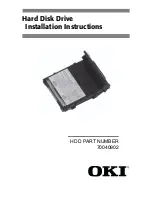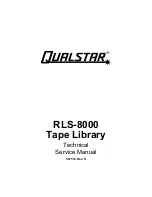
Seagate Video 2.5 Product Manual, Rev. H
19
2.12.6 Morocco Commodity Mark
To satisfy our OEM customers, Seagate has added the Moroccan Commodity Mark to the devices provided to the OEM for the sale of
Customer Kits produced by our OEM customers that are intended to be incorporated into the OEM's finished system-level product by
an end user. The Customer Kits are considered 'devices' under Morocco's Order of the Minister of Industry, Trade, Investment and
Digital Economy No. 2574-14 of 29 Ramadan 1436 (16 July 2015) on electromagnetic compatibility of equipment.
Seagate devices are tested for compliance and complies with the European Union (EU) Electromagnetic Compatibility (EMC)
Directive 2014/30/EU and the Low Voltage Directive (LVD) 2014/35/EU. Accordingly, the devices also meets the requirements of
Morocco's Order of the Minister of Industry, Trade, Investment and Digital Economy No. 2574-14 of 29 Ramadan 1436 (16 July 2015)
on electromagnetic compatibility of equipment.
2.12.7 Taiwanese BSMI
Devices with the Taiwanese certification mark comply with Chinese National Standard, CNS13438.
For compliance with the Taiwan Bureau of Standards, Metrology and Inspection’s (BSMI) requirements,
See Section 2.13.3 on page 21.
2.12.8 FCC verification
These devices are intended to be contained solely within a personal computer or similar enclosure (not attached as an external
device). As such, each device is considered to be a subassembly even when it is individually marketed to the customer. As a
subassembly, no Federal Communications Commission verification or certification of the device is required.
Seagate has tested this device in enclosures as described above to ensure that the total assembly (enclosure, disk device,
motherboard, power supply, etc.) does comply with the limits for a Class B computing device, pursuant to Subpart J, Part 15 of the
FCC rules. Operation with noncertified assemblies is likely to result in interference to radio and television reception.
Radio and television interference.
This equipment generates and uses radio frequency energy and if not installed and used in strict
accordance with the manufacturer’s instructions, may cause interference to radio and television reception.
This equipment is designed to provide reasonable protection against such interference in a residential installation. However, there is
no guarantee that interference will not occur in a particular installation. If this equipment does cause interference to radio or
television, which can be determined by turning the equipment on and off, users are encouraged to try one or more of the following
corrective measures:
• Reorient the receiving antenna.
• Move the device to one side or the other of the radio or TV.
• Move the device farther away from the radio or TV.
• Plug the computer into a different outlet so that the receiver and computer are on different branch outlets.
If necessary, users should consult a dealer or an experienced radio/television technician for additional suggestions. Users may find
helpful the following booklet prepared by the Federal Communications Commission:
How to Identify and Resolve Radio-Television
Interference Problems
. This booklet is available from the Superintendent of Documents, U.S. Government Printing Office, Washington,
DC 20402. Refer to publication number 004-000-00345-4.
















































